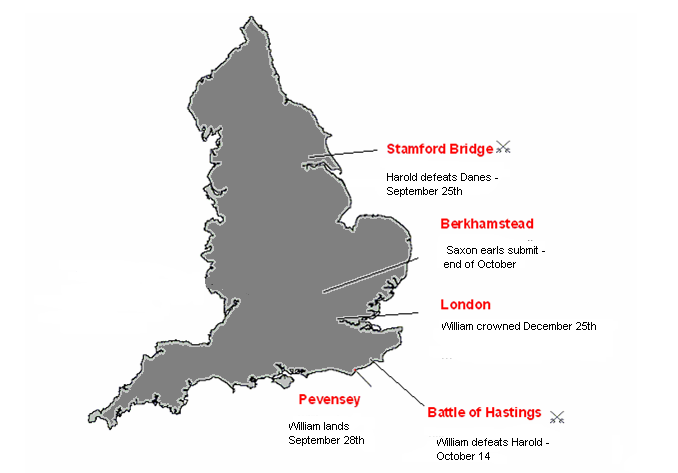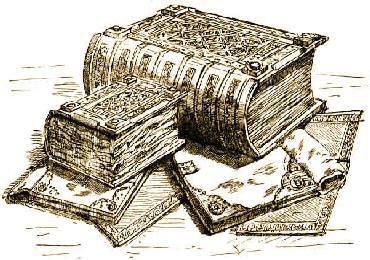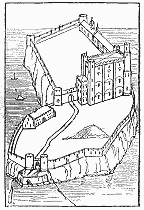Е. В. Воевода английский язык великобритания: история и культура Great Britain: Culture across History Учебное пособие
| Вид материала | Учебное пособие |
Содержание5. Edward the Confessor Do you know that Claimants to the English throne Battle of Hastings 2. The Norman The Domesday Book Royal power |
- Е. В. Воевода английский язык великобритания: история и культура Great Britain: Culture, 365.14kb.
- Курс лекций по дисциплине английский язык Факультет: социальный, 440.82kb.
- Учебное пособие соответствует государственному стандарту направления «Английский язык», 2253.16kb.
- Lesson one text: a glimpse of London. Grammar, 3079.18kb.
- Реферат по дисциплине: страноведение на тему: «The geographical location of the United, 1698.81kb.
- Education in great britain, 98.44kb.
- The United Kingdom of Great Britain and Northern Ireland, 257.28kb.
- Г. В. Плеханова английский язык учебно-методическое пособие, 1565.3kb.
- А. Л. Пумпянский написал серию из трех книг по переводу, 3583.47kb.
- Учебное пособие для студентов факультета иностранных языков / Сост. Н. В. Дороднева,, 393.39kb.
The Scandinavian borrowings in English are such adjectives as happy, low, loose, ill, ugly, weak; the nouns sister, sky, window, leg, wing, harbour. The names of Danish settlements often ended in –by or –toft/thorp(e) which meant ‘village, settlement’. Thus we have Derby, Grimsby, Whitby, Lowestoft, etc.
Old English was a synthetic language. It expressed relations between words and expressed other grammatical meanings with the help of suffixes, prefixes and interchanges in the root. The noun had the categories of number, gender (masculine, feminine, neutral), declension (ending in different letters), and case (Nominative, Genitive, Dative, Accusative). Strong and weak verbs were conjugated in the Present and the Past. A future action was expressed by means of a Present tense. During the Danish invasion prepositions and pronouns were used more often than before.
`
T
5. Edward the Confessor
he Danish dynasty ruled England up to 1042 when the English throne went to Edward the Confessor the eldest son of the Saxon king Aethelred and Emma of Normandy. He restored the Saxon rule but boosted Norman influence in England.
During the Danish rule Edward lived in Norman exile. When he returned to England as king, he brought a large number of Norman monks and noblemen to whom he began to give the richest lands and high government positions. Edward did not only speak French himself but insisted on it being spoken at his court. During his reign there was a constant struggle between the Norman influence at court and the power of Saxon earls. Edward was unable to control the nobility, especially Earl Godwin, whose daughter was his wife. Edward himself was more interested in the Church than in state affairs and led a monastic life building churches. By the time he died, there was a church practically in every English village. King Edward also founded Westminster Abbey.
Upon the death of Edward the Confessor, the Saxon Witan was to decide who would get the English throne. One of the claimants was Harold, the son of Earl Godwin. The other was William, the Duke of Normandy.
DO YOU KNOW THAT
| ? |

- O
1. Beginning of the Norman invasion
rigin of the Normans
In the 9th century, while the Danes were plundering England, another branch of Northmen, also related to the Danes, were raiding the northern coast of France. They came to be called Normans, a variation of the word ‘Northmen’. The Danes settled down in the conquered part of England called the Danelaw. Likewise, the Normans settled down on the land conquered from the French king – a territory which is still called Normandy.
As time went by, the Danes mixed with the Anglo-Saxons, who were themselves of Germanic origin, and retained their Germanic language, customs and traditions. As for the Normans, they were now quite different from their Teutonic forefathers. They lived among the French who were a different people and spoke a different language – belonging to the Romance group. The Normans assimilated with the French population of the conquered territories, adopted their culture and a certain dialect of the French language. The establishment of the feudal system in France had been completed by the 11th century, and the Norman barons had come into possession of large tracts of land and a great number of serfs.
The Normans lived under the rule of the Duke of Normandy. In the 11th century, the Dukes of Normandy officially acknowledged the King of France as their overlord, but, like other dukes and counts of France, they had made themselves practically independent. They were as strong as the king himself, whose domain was smaller than the Duchy of Normandy. They coined their own money, made their own laws, held their own courts and built their own castles. As a well-trained cavalry, the Norman knights were the best in Europe. They were formidable fighters and would wage wars so as to seize new lands and serfs.
- Claimants to the English throne
The question who should follow Edward the Confessor as king was one of the most important in English history.
In the last ten years of his rule, King Edward heavily relied on his brother-in-law, Harold Godwin. Being childless, the English monarch is believed to have named Harold as his successor. At the same time, it was known that Edward had promised the English crown to his grand-nephew William, the Duke of Normandy, in return for his support. Edward’s death started the struggle for the English throne. The third claimant for the English throne was King Harold Hardrada of Norway.
When the Witan, or council of wise men, chose Harold Godwin as King of England, William of Normandy began preparations for the war. He sent messengers far and wide to invite the knights of Europe to his army. William called upon all Christians in Europe to help him gain the rights to the English throne. He also gained the support of the Pope promising to strengthen the influence of Rome in England. Although no pay was offered, the army was raised quickly because William promised land.
Harold Godwin reigned for less than a year. In the summer of 1066 the Norwegians headed by Harold Hardrada invaded Northumbria and occupied York. Harold Godwin marched northwards and met Hardrada at Stamford Bridge where the Norwegians were defeated in a fierce battle on September 25. Three days later Duke William’s fleet, which had been delayed by bad weather, landed at Pevencey. On hearing the news, King Harold had to rush south 250 miles in nine days.
- Battle of Hastings
The English and Norman armies met on October 14, 1066, in the neighbourhood of Hastings. The Normans outnumbered the Anglo-Saxon forces and were superior in quality. The Normans used a skilful combination of heavy-armoured cavalry and archers. First, the archers would break up the ranks of the enemy, then followed a charging cavalry which decided the victory.
Map 7

The Anglo-Saxons had a small cavalry which was mainly Harold’s bodyguard. The English footmen usually fought in a mass standing close together, so as to form a wall of shields to protect themselves. The hastily gathered peasants were armed with pitchforks, axes or thick oak poles and could not hold out long against the well-armed and armoured Normans. Even the skilled Saxon archers did not pose danger to the Normans who wore armour, as there was little chance that many of them could be killed by Saxon arrows.
The battle lasted the whole day. Despite their tiredness after a long march, the English had the initial advantage, since they were fighting for their independence. But in the end the Normans’ discipline prevailed. Harold died fighting, cut down by a sword (not, as often said, struck by an arrow). Gradually the Saxon rows thinned and finally the Normans succeeded in breaking the line of defence. The battle was over. William ordered Harold to be buried with all the royal honours and then marched to London.
Harold’s death ended England’s 600 years of rule by Anglo-Saxon kings. The Witan proclaimed William king of England and on Christmas Day 1066 the Duke of Normandy was crowned as William I in the new church of Westminster Abbey. In history he is more often referred to as William the Conqueror. He ruled England for 21 years, from 1066 to 1087.
2. The Norman
Conquest
- Lands and vassals
As a result of the Norman invasion, England did not only receive a new royal family but also a new ruling class, a new culture and a new language. The victory at Hastings was only the beginning of the Conquest. Despite the surrender of London and Winchester it took William and his barons over 5 years to subdue the whole of England. There were risings against Norman rule in every year from 1067 to 1070. William ruthlessly put down local revolts. His knights raided villages and towns, burning and slaying everything and everybody. After several risings in the North, the lands of Northumbria were raised to the ground. Every house or cottage between Durham and York was burnt down, people were massacred, crops were destroyed and cattle were driven off. It took Northumbria almost a century to recover.
William organised his English kingdom in accordance with the feudal system which was based on ownership of land. The Conqueror declared that all the lands of England belonged to him by right of conquest. One-seventh of the country was made the royal domain which consisted of 1420 estates. The monasteries were granted 1700 estates. The Anglo-Saxon landowners and clergy were turned out of their houses, estates and churches. More than 4,000 Saxon lords were replaced by a group of less than 200 Norman barons. By 1086 there were only two surviving English lords of any importance.
While all land was owned by the king, part of it was held by the king’s vassals, in return for services and goods. Those were the knights who had taken part in the Conquest, and the Anglo-Saxon lords who supported the Conqueror. The greater nobles gave part of their lands to lesser nobles and other “freemen”. Some freemen paid for the land by doing military service, while others paid rent. The noble kept “serfs” to work on his own land. They were not free to leave the estate, and were often little better than slaves.
The two basic feudal principles implied that every man had a lord, and every lord had land. On getting his estate, each Norman nobleman became the king’s vassal as he swore an oath of allegiance which said: “I become your man from this day forward, and to you shall I be true and faithful, and shall hold faith for the land I hold from you.” William made both the great barons and their vassals swear allegiance to him directly. In 1086, at a gathering of knights in Salisbury, William made them all take a special oath to be true to him against his enemies. Thus, the European rule “my vassal’s vassal is not my vassal’ was broken in England. In other words, if a baron rebelled against the king, his immediate vassals were obliged to fight for the king.
- The Domesday Book
By 1086 the Conqueror wanted to know exactly who owned which piece of land, and how much it was worth. The Anglo-Saxon Chronicle says: “In 1086 William the Conqueror sent his men all over England, into every shire to find out what property every inhabitant of England possessed in land, or in cattle, and how much money this was worth.” He needed this information to know how much was produced and how much he could ask in tax. That was the first registration and complete economic survey in England. Each m
 anor was described according to value and resources. Every man who owned or rented land was questioned and threatened to be punished on doomsday if he did not answer the questions of the king’s men as to how much land there was; who owned it; how much it was worth; how many families, ploughs and sheep there were, etc. As a result of the registration, the majority of the population were registered as unfree peasants, or serfs. They made 79 per cent of the total population of England.
anor was described according to value and resources. Every man who owned or rented land was questioned and threatened to be punished on doomsday if he did not answer the questions of the king’s men as to how much land there was; who owned it; how much it was worth; how many families, ploughs and sheep there were, etc. As a result of the registration, the majority of the population were registered as unfree peasants, or serfs. They made 79 per cent of the total population of England. Domesday was one of the greatest administrative achievements of the Middle Ages. It assisted the royal exploitation of crown lands and feudal rights, and provided the new nobility with a formal record and confirmation of their lands thus putting a final seal on the Norman occupation.
T
 he original copy of the Domesday Book, in several volumes, still exists, and provides an extraordinary amount of information about England at that period of time.
he original copy of the Domesday Book, in several volumes, still exists, and provides an extraordinary amount of information about England at that period of time.- Castles
To further strengthen his power, William built 78 castles throughout the country. Ironically, the Normans used the labour of the conquered Anglo-Saxons to erect the fortresses which would be used to suppress the native population. The main purpose of the castle was to house the Norman cavalry which would find shelter inside in time of danger and from which they could start on their raids.
A Norman castle was often built on a hill or rock. First, the peasants would dig out a moat and make a drawbridge, and then use the removed soil to make the hill higher. Then they would build a wooden tower on top of the hill and surround it with a wooden wall, wide enough for archers to walk along. The outer wall was strengthened with towers built on each corner. Later the wooden structures were replaced by stone keeps. The castle usually dominated the nearest town, village or countryside.
Most of the castles were royal property. A baron could build a castle only if he was granted the king’s special permission. The first Norman stone castles were the Tower of London, the castle of Durham and Newcastle on the river Tyne. Some castles, such as Windsor Castle, are still used as residences.
3. England in the Middle Ages
- Royal power
William I began the rule of a dynasty of Norman kings (1066-1154) and entailed the replacement of the Anglo-Saxon nobility with Normans, Bretons and Flemings, many of whom retained lands in northern France. Instead of the Saxon Witan, William established the Curia Regis (1066) which existed until the end of the 13th century. It had the functions of government and king’s court in the early medieval times. Although William let the English keep their own courts and laws, the judges were Norman.
Another change introduced by William was the abolition of the earldoms of Northumbria, Mercia and Wessex, which had been established by King Canute. Now the country was divided into counties which were ruled by sheriffs appointed by the king.
Between 1066 and 1144 England and Normandy were united under one king-duke. The result was the formation of a single cross-Channel political community. Since Normandy was a principality ruled by a duke who recognised the king of France as his overlord, this also meant that from now on English politics became part of French politics. The two countries shared not only a ruling dynasty, but also a single Anglo-Norman aristocracy. It lasted until 1204.
After his death in 1087, William I was succeeded by his sons and nephew (William II, Henry I, Stephen) and finally by his granddaughter’s husband Henry II of the House of Anjou also known as the Plantagenet. Royal power was strengthened and the Anglo-Norman kings acquired new territories both on the British Isles and on the Continent.
As duke of Normandy, duke of Aquitaine (by his marriage to Eleanor of Aquitaine), and count of Anjou Henry II had inherited lordship over the respective and neighbouring territories. In England, he managed to strengthen royal power and win back the northern English territories which had been occupied by Scotland. Henry II was king of an empire stretching from the Scottish border to the Pyrenees, probably the most powerful ruler in Europe, who was richer than the emperor of the king of France. (He was the lord of Paris, Blois, Normandy, Flanders, Brittany, Burgundy, Champagne, Anjou, Aquitaine, Gascony and Toulouse on the Continent and of England and part of Ireland across the Channel.) The source of his wealth was in England, his wife’s homeland, but the heart of the empire lay in Anjou, the land of his fathers. Out the thirty-five years of his reign, Henry II spent twenty-one on the Continent. In England, he confiscated or ruined the castles built without royal authority and curbed the power of the nobles. He introduced trial by jury and established Anglo-Saxon common law as the law of England.
